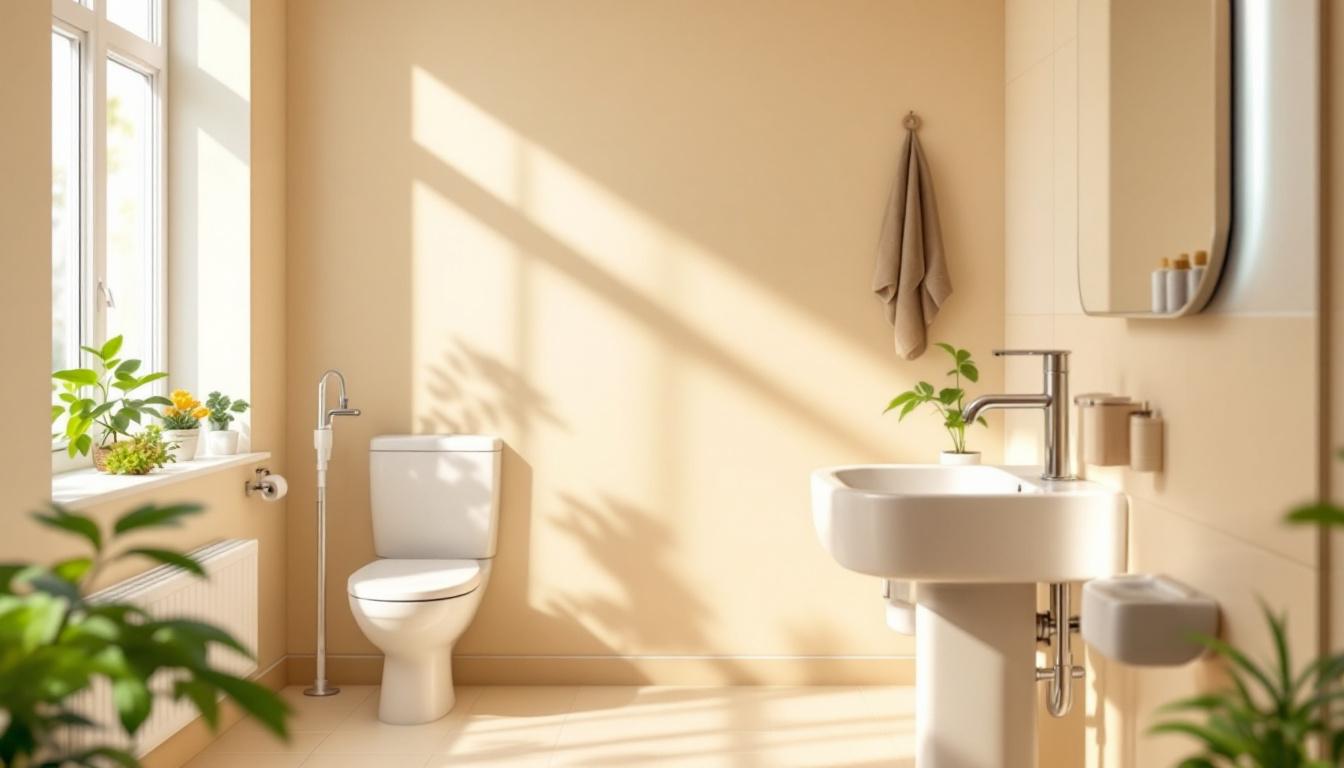Handwashing & Showering To Kids With Autism

Understanding and Supporting Hygiene for Children with Autism
Personal hygiene routines like handwashing and showering can present unique challenges for children with autism, largely due to sensory sensitivities and developmental needs. With the right strategies, caregivers can make these routines more manageable, less stressful, and even enjoyable for children. This article explores effective tools, techniques, and approaches to support children with autism in developing consistent hygiene habits that promote health, independence, and confidence.
Structured Routines and Visual Supports

How can I create an effective visual schedule to help my child with autism with their hygiene routines?
Creating a visual schedule tailored to a child's needs is a powerful way to promote independence and reduce anxiety during hygiene tasks. Begin by selecting clear, simple images or symbols that represent each step of the routine. For example, use pictures of a toothbrush for brushing teeth, hands under a faucet for handwashing, and a comb for hair grooming. These visuals should be straightforward and easy for the child to interpret.
Arrange these images in a logical sequence—step-by-step—to guide the child through the process from start to finish. You can use laminated cards, digital apps, or even a picture board that is placed where the child can see it easily. Consistency in using the visual schedule is essential; introduce it at the beginning of each routine to foster familiarity and learning.
Breaking down hygiene tasks into small, manageable steps helps lessen overwhelm, especially for children with receptive language delays. Each step should be illustrated clearly to support understanding. For example, a photo sequence showing
- Wetting the toothbrush,
- Applying toothpaste,
- Brushing in gentle circles,
- Rinsing and spitting.
Using the schedule regularly is crucial. Prompt your child with gentle cues and praise their efforts to encourage independence. Over time, reduce prompts as their confidence grows.
Integrate the visual schedule into daily routines both at home and in other environments such as school or therapy settings. This consistency builds predictability, helping your child feel more secure and capable of completing hygiene tasks independently. Ultimately, a well-designed visual schedule can foster self-care skills, boost confidence, and promote lasting good hygiene habits.
Addressing Sensory Sensitivities with Personal Hygiene Products and Environment
 Children with sensory processing challenges often find hygiene routines daunting due to sensitivities to touch, smell, or sounds. To support them effectively, caregivers can utilize sensory-friendly products and modify the environment to create a more comfortable experience.
Children with sensory processing challenges often find hygiene routines daunting due to sensitivities to touch, smell, or sounds. To support them effectively, caregivers can utilize sensory-friendly products and modify the environment to create a more comfortable experience.
Using gentle, mild soaps without dyes or harsh chemicals minimizes irritation and sensory overload. Fragrance-free options or products infused with calming scents like lavender can make the experience more pleasant. For children sensitive to textures, offering a variety of soap types—such as foaming, gel, or cream—allows them to choose what feels best.
Adjustments to water settings play a significant role. Water temperature should be warm but not hot, with consistent pressure to avoid startling the child. Handheld showerheads or their own labeled spray bottles can give children more control, reducing anxiety associated with large showerheads or unpredictable water flow.
Enhancing the environment with sensory tools and calming stimuli can significantly improve comfort levels. Gentle lighting, soft music, or white noise can help mask overwhelming sounds. Incorporating deep pressure techniques—such as a gentle hug or wearing compression clothing before or after washing—can provide calming input. Additionally, toys or objects that engage the senses, like textured towels or soft brushes, can make hygiene routines more engaging.
Caregivers can support children with sensory challenges during hygiene tasks by employing various strategies. Visual supports, such as step-by-step schedules or social stories, prepare children for what to expect and reduce surprises. Desensitization techniques—gradual exposure to water, sounds, and textures—allow children to adapt comfortably over time.
Allowing children choices, such as selecting their preferred soap or toy, fosters a sense of control and independence. Consistency in routines and positive reinforcement further encourage cooperation. Patience and flexibility are essential; understanding that each child’s sensitivities are unique helps caregivers tailor approaches effectively.
Incorporating these strategies creates a supportive, sensory-aware environment that helps children with sensory processing challenges successfully navigate hygiene routines. This not only promotes independence but also builds confidence, making these essential activities less stressful and more manageable.
Making Hygiene Activities Fun and Engaging

What are some practical tips for facilitating handwashing and showering for children with autism?
Children with autism often experience sensory sensitivities that can make hygiene tasks like handwashing and showering challenging. To make these routines more manageable and less stressful, it's helpful to use visual supports such as picture schedules, social stories, and videos. These tools break down complex activities into small, clear steps, helping children understand what to do and when.
Establishing consistent routines creates predictability, which can significantly reduce anxiety. For example, having a set sequence for handwashing or showering makes the activity familiar and expected. Using sensory-friendly products, such as fragrance-free soaps, gentle brushes, and calming scents like lavender, can also improve comfort.
Adjustments tailored to individual sensory needs are vital. For instance, controlling water temperature, using handheld showerheads, or adding calming music during shower time can promote a more relaxed experience. Providing positive reinforcement, such as praise or small rewards, encourages children to participate and gain confidence.
It's important to support each child's specific preferences and sensitivities. Modeling hygiene behaviors through visual demo videos or role-playing helps children learn by example. Gradually increasing independence—starting with guided assistance and moving to solo routines—builds skills over time.
Combining these approaches makes hygiene routines more approachable and enjoyable, turning a potentially stressful task into an engaging activity that supports overall well-being.
Supporting Pre-Adolescents and Teenagers During Puberty
How do hygiene needs change as children with autism reach adolescence?
As children grow into adolescence, their personal hygiene routines need to adapt to new physical, emotional, and social changes. This period introduces new challenges and responsibilities that require additional support and understanding.
One of the major changes during puberty is the need to learn how to use deodorant effectively. Teenagers may need help choosing appropriate products and understanding when and how to apply them regularly to stay fresh throughout the day.
Caring for skin becomes more important due to pimples and acne. Learning about gentle skin care routines, selecting the right skincare products, and understanding the importance of hygiene can help manage skin issues comfortably.
Shaving is another new skill many teens need to learn. This involves understanding safety, using suitable tools, and establishing routines that ensure comfort and hygiene while respecting individual preferences.
Managing menstruation introduces a complete set of new routines, including the use of pads or tampons, proper disposal, and maintaining hygiene during periods. Providing visual supports, social stories, and demonstrations helps teens understand and become comfortable with these routines.
Supporting teens during this stage often involves visual aids and modeling to build independence. Social stories can describe the reasons behind these new routines, reducing anxiety and promoting positive attitudes.
The transition also emphasizes the importance of routine consistency and gradual learning. Using visual schedules, videos, and step-by-step guides can help teens develop these new skills confidently.
Engaging caregivers, educators, and occupational therapists ensures support is tailored to individual needs. Praise and encouragement foster motivation and help develop positive hygiene habits.
Ultimately, guiding teens through puberty with patience and understanding helps them build confidence in managing their personal hygiene, leading to greater independence and overall well-being.
Collaborating with Professionals and Caregivers
Support from a team of professionals and caregivers is essential in establishing effective hygiene routines for children with autism. Collaborating with occupational therapists, teachers, and caregivers allows for the development of strategies that are tailored to each child's unique needs, strengths, and sensitivities.
When all parties work together, routines become more consistent across different environments, helping children feel more secure and confident in their daily activities. Regular communication and sharing of progress ensure that strategies remain effective and that everyone is on the same page.
Building a strong support network is also vital. This network provides emotional support and practical guidance, enabling caregivers to implement consistent approaches and troubleshoot challenges as they arise.
How can caregivers support children with sensory processing challenges during hygiene routines?
Caregivers can support children with sensory processing difficulties by incorporating sensory-friendly tools such as soft fabrics, mild-smelling or scent-free soaps, and gentle brushes. Creating a calming environment with soft lighting, quiet spaces, and soothing music can help reduce sensory overload. Visual supports like step-by-step schedules and social stories prepare children for upcoming tasks, easing anxiety.
Gradual exposure techniques, such as introducing water play outside of shower time or slowly increasing tactile input, help desensitize children to sensory stimuli. Giving children choices—for example, selecting their own toothbrush or preferred clothing—empowers them and makes routines feel more controlled. Deep pressure inputs, like hugs or compression clothing, can also provide calming comfort.
How can collaboration improve hygiene routines for children with autism?
Collaboration enhances hygiene routines by ensuring interventions are suitable to each child's sensory profile. When occupational therapists, teachers, and caregivers share insights and resources, routines become more consistent and effective.
This teamwork allows for the exchange of successful strategies, progress updates, and adaptive tools, creating a cohesive support system. Such coordination helps reinforce learning and build new skills, leading to increased independence and confidence in hygiene tasks.
Overall, working together in a collaborative manner reduces stress for children and improves the success of hygiene routines, contributing to their overall growth and well-being.
| Aspect | Key Focus | Details | |----------------------------|---------------------|----------------------------------------------------------------п---------------------------| | Professionals Involved | Occupational therapists, teachers, caregivers | Share expertise, strategies, and progress updates to tailor routines.| | Consistency | Across environments | Regular routines across home, school, and therapy settings.| | Support Network | Family, professionals, peers | Emotional backup, resource sharing, and encouragement.| | Strategies | Visual supports, gradual exposure, sensory tools | Use of schedules, social stories, and sensory modifications.| | Goals | Independence, confidence, comfort | Helping children perform hygiene tasks with less anxiety and more independence.|
Creating a Compassionate and Patient Approach
How can patience and flexibility improve hygiene routines for children with autism?
Supporting children with autism in developing effective personal hygiene habits requires a gentle, understanding approach. Patience allows caregivers and educators to give children the time they need to learn and master each step without feeling rushed or overwhelmed. Flexibility in strategies enables customization based on the child's unique sensitivities and learning pace.
Children with autism may respond differently to various routines or sensory inputs. By being adaptable—such as trying different soap textures, adjusting water temperature, or changing the routine's order—adults can find what best suits each child's needs. This tailored approach reduces anxiety and helps build a positive association with hygiene tasks.
Why is celebrating small victories important?
Recognizing and celebrating small progress encourages children and boosts their confidence. For example, praising a child for brushing their teeth after multiple attempts or successfully washing their hands can reinforce positive behavior. These moments of acknowledgment motivate children to continue practicing and improving their skills.
Celebrating small victories also fosters a sense of achievement, which is crucial for children with autism who might face challenges with sensory sensitivities or change.
How do adjusting strategies to individual needs help?
Every child with autism is unique, with different sensory sensitivities, preferences, and learning styles. Adjusting strategies might include using visual aids like social stories or schedules, incorporating favorite activities into routines, or employing sensory tools such as calming scents or textured soaps.
For example, some children may benefit from visual timers to understand how long a task will take, while others might need sensory-friendly equipment like waterproof goggles or soft towels. Regularly reviewing and modifying routines based on what works best ensures that children feel supported and less resistant to hygiene activities.
Practical tips for a supportive hygiene routine
| Strategy | Explanation | Example |
|---|---|---|
| Use visual supports | Visual schedules and social stories guide children through steps | Picture charts for shower routines |
| Incorporate sensory tools | Use calming scents or textures to make routines more comfortable | Essential oils in soaps, textured washcloths |
| Break tasks into small steps | Smaller, manageable steps reduce overwhelm | One step at a time for brushing teeth |
| Celebrate efforts | Praise and reward small successes | Verbal praise, stickers, or favorite music |
| Be patient and flexible | Adjust routines based on child's response | Switch routine order if needed, or try different products |
Building a consistent, supportive environment
Creating a positive experience during hygiene routines involves patience, flexibility, and personalized strategies. Collaborating with occupational therapists, teachers, and caregivers helps ensure consistent support. Using visual supports and sensory-friendly tools can significantly ease anxiety and resistance.
Remember, progress might be slow, but each small step forward is a significant achievement. Celebrating these successes encourages children to develop independence and feel more confident in their personal hygiene skills, paving the way for healthier habits and a happier experience.
Fostering Confidence and Independence in Hygiene
Supporting children with autism in achieving effective handwashing and showering routines requires patience, understanding, and personalized strategies. By incorporating visual supports, sensory accommodations, positive reinforcement, and collaborative efforts, caregivers can create a positive and supportive environment that encourages independence. Celebrating small successes along the way helps build confidence and fosters lifelong hygiene habits that contribute to overall health and well-being.
References
- Autism Hygiene Checklist: A Parent's Guide to Simplifying Personal ...
- Personal hygiene for autistic pre-teens and teenagers
- Sensory Processing Disorder Hand Hygiene Ideas For Children
- Showering Strategies for Children with Autism - Astra ABA
- Teaching Hygiene Skills to Children with Autism: A Guide for Parents
- Personal hygiene for autistic pre-teens and teenagers
- 10 Personal Hygiene Skills for Kids with Autism | Aim Higher ABA
- A Guide to Teaching Kids With Autism Hygiene Skills